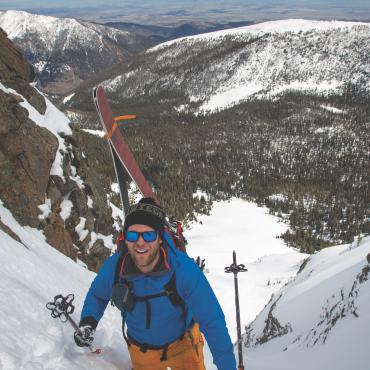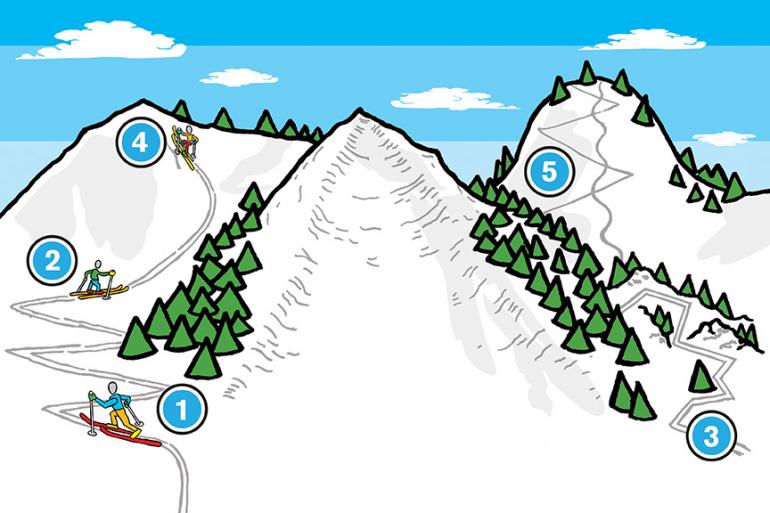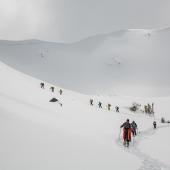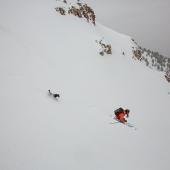A Perfect Line
Strategy in the skintrack.
As a backcountry skier, nothing is more irritating than following an inefficient, poorly-set skintrack. But as a guide, setting a good track is even more important; it allows my clients to ski longer and take more runs, stay more comfortable, and ultimately take greater enjoyment from their experience. Plus, a good skintrack is a thing of absolute beauty snaking up the mountain. Here are some tips for setting the fastest, most efficient (and most beautiful) track to the top. Because it’s all about getting up to get down, right?
1. Safety
No one should be caught in an avalanche while skinning. On the climb, we have plenty of time to assess conditions, communicate with our partners, and minimize our exposure—don’t just put your head down and grunt. Skintracks should avoid runout areas, potential trigger points, and terrain traps like creek bottoms and gullies.
2. Angle
Many people assume a steeper skintrack gets you to the top faster: wrong. Too-steep skintracks also burn far more energy, become icy faster, and present more opportunity for injury. The fastest, most efficient angle is 12 degrees (many very smart people have actually studied this), which is typically achieved with either no heel riser, or the lowest heel riser setting. Anything more is a proven waste of time and energy.
3. Route
Too often, track setters don’t look far enough ahead, and end up having to duck and weave around obstacles, producing a drunken-looking skintrack that changes pitch and direction frequently. Skintracks that lose elevation are unacceptable. An ideal track minimizes changes in direction and maximizes long, consistent stretches of low-angle cruising. These are fastest, most efficient, and easiest to maintain. Setting track is all about using terrain and making a plan—not just reacting as obstacles present themselves.
4. Turns
Kick turns are a necessary skill in the backcountry, certainly, but they are not the most efficient way to change direction. They are slow, energy-intensive, and can really demoralize novices. Using terrain features (benches, rollovers, tree wells) to make round, gradual turns is faster, more efficient, and easier to maintain, even for experienced skinners. Kick turns are only necessary in confined or consistently steep terrain.
5. Etiquette
As a rule, try to avoid putting your track through terrain that’s good for skiing! Hitting a firm skintrack on the way down stinks, and really kills the powder buzz. Use terrain features like ridgelines and treeline margins whenever possible (these are also usually some of the safest options), and if you have to ascend skiable slopes, do your best to compromise—leave some real-estate for untracked turns, ideally your own. Finally, setting a good track that can be enjoyed by the next party is always a worthy karmic goal.










